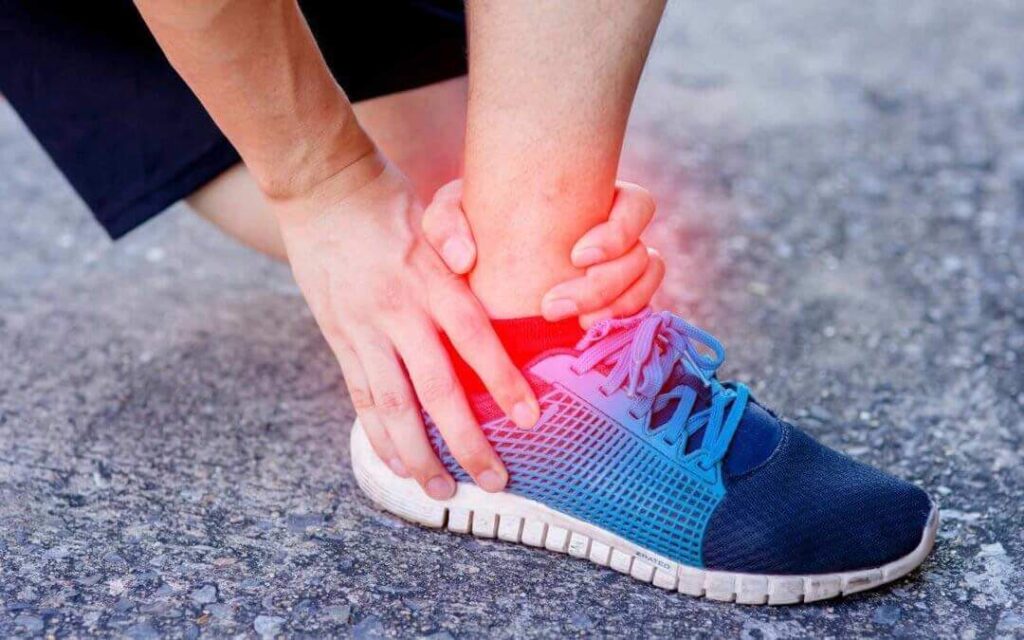Don’t Let an Ankle Sprain Keep You From Being Active

What is an ankle sprain?
An ankle sprain is one of the most common musculoskeletal injuries, with incidence as high as 34% in athletes. The most common type is a lateral ankle sprain (85%) with a mechanism of twisting the ankle into a forced plantarflexed and inverted position. The lateral ankle ligaments consist of the anterior talo-fibular ligament (ATFL), the calcaneo-fibular ligament (CFL) and the posterior talo-fibular ligament, with the ATFL being the most commonly affected ligament during an ankle sprain.
Symptoms
- Pain, swelling, and bruising
- Tenderness to touch
- Inability to put weight through LE or walk, instability if severe
- You may hear or feel a “pop” at the time of injury
How do you know if you need an x-ray?
- If you are unable to weight bear
- Extreme swelling & bruising
- Numbness/tingling in the foot/ankle
Grades of Ankle Sprains
Grade 1 (Mild)
- Stretching of the ligament
- Mild tenderness and swelling around the ankle
- Usually resolves quickly (within 10-14days)
Grade 2 (Moderate)
- Partial tearing of the ligament
- Moderate tenderness and swelling of the ankle and foot
- May experience feelings of instability / looseness of the ankle joint
Grade 3 (Severe)
- Complete tear of the ligament
- Significant tenderness and swelling around the ankle and foot
- Substantial instability
- Slower recovery and return to sport
When to seek physical therapy intervention:
Due to the high incidence of these injuries, many patients believe they should just “walk it off” and are usually told to rest, ice, compress the ankle, and elevate (RICE) to reduce swelling. This treatment is typically followed by a period of rest, maybe some at home exercises, and an attempt to return to prior activities/sport. Although pain and swelling usually improve quickly, more than 70% of people who sprain their ankle have problems with persistent pain and dysfunction, and up to 80% re-sprain their ankle at some point. This suggests the importance of a superior more supervised care for ankle sprains.
Let’s see if that matters….
In a 2013 study by Cleland et al., the authors found that patients who were treated with skilled manual therapy (hands on care including stretching and joint mobilizations) improved by 87% at 4 weeks vs. patients only performing exercises who improved 73% by 4 weeks [1]. Furthermore, a systematic review from 2017 found similar results stating that joint mobilizations can improve balance and range of motion in the short and long term[2].
Simply, for improved outcomes after an ankle sprain, skilled manual therapy at a clinic that provides the PT adequate time spent with the patient is of utmost importance for optimal recovery.
At COAST, we provide individualized, one-one-one care utilizing cutting edge manual therapy techniques. Call today to learn more about the benefits of PT after an ankle sprain!
For more information on COAST Rehab’s physical therapy services head to www.coastrehabnj.com.
1. JA Cleland et al titled “Manual Physical Therapy and Exercise Versus Supervised Home Exercise in the Management of Patients With Inversion Ankle Sprain: A Multicenter Randomized Clinical Trial,” J Orthop Sports Phys Ther 2013;43(7):443-455. doi:10.2519/jospt.2013.4792.
2. Weerasekara I, Osmotherly P, Snodgrass S, Marquez J, de Zoete R, Rivett DA. Arch Phys Med Rehabil. 2017 Sep 4. Pii: S0003-9993(17) 31067-6.



